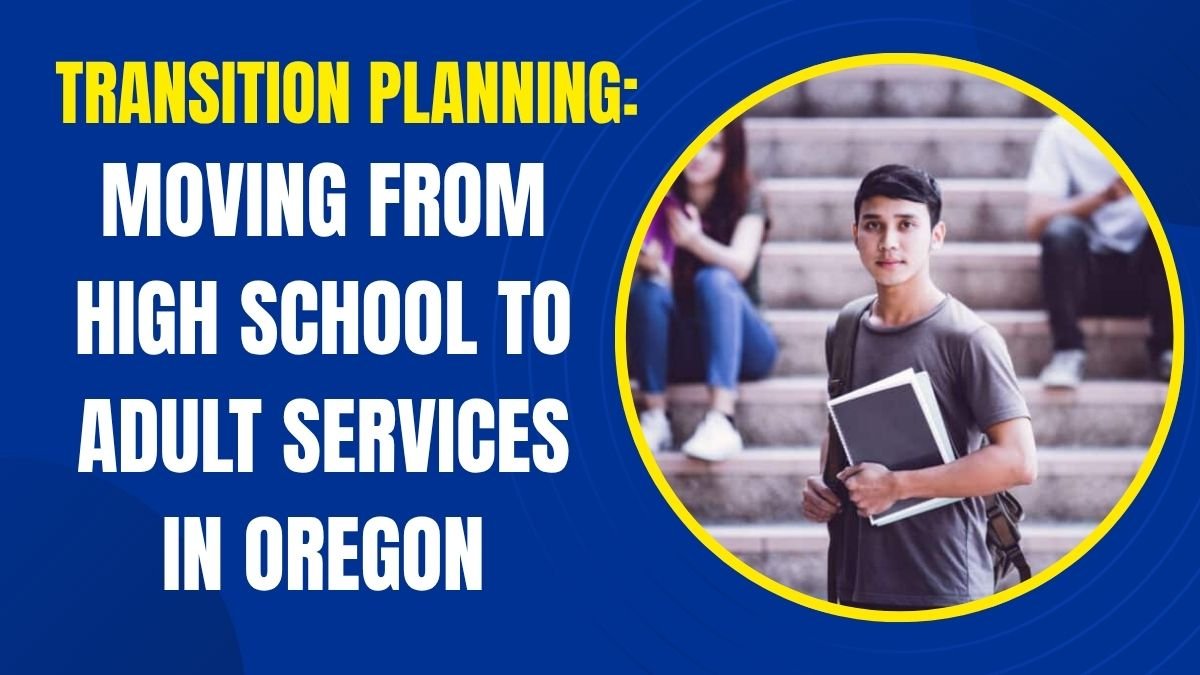Life after high school is a major transition for any student, but for students with disabilities, this transition becomes even more critical. In Oregon, “transition planning” is the process of making this transition smooth, safe, and purposeful. Its goal is to ensure that students understand and are prepared for their needs related to education, employment, and independent living after leaving high school. This process doesn’t wait until the final year of high school; it begins much earlier to give the student ample time, support, and guidance.
What is transition planning?
In Oregon, transition planning is a formal process that carefully considers the future of students with disabilities and develops an individualized plan for them. This plan is based on the student’s abilities, interests, strengths, and challenges. Its purpose is to prepare them for the world after school, whether it’s further education, employment, or independent living skills.
This process is a crucial part of the student’s Individualized Education Program (IEP) and, according to federal regulations, must begin by age 16. However, the state of Oregon recommends starting it between the ages of 14 and 16.
When Does Transition Planning Begin?
Early initiation is crucial for effective transition planning.
- Federal Law: Planning must begin by age 16.
- Oregon Recommendation: Starting the plan between the ages of 14 and 16 is considered ideal because this is the age when students begin to understand their interests, abilities, and future goals.
The advantage of starting early is that the school, family, and agencies can work together over a longer period to help the student learn skills and make informed decisions.
Who is involved in the transition team?
A transition plan is not created by one person. It is a team-based process involving several individuals who contribute:
- The Student
- This plan is for their future, so their presence and input are paramount.
- Parents or Guardians
- They best understand the child’s needs and daily challenges. Special Education Teacher
- General Education Teacher
- School Representative
- Representatives from Adult Services Agencies
- Such as Vocational Rehabilitation, Developmental Disability Services, or other support organizations. Written parental consent is required to invite these representatives to the meeting.
The goal of this team is to provide the student with the strongest possible foundation for living an independent and safe life after high school.
How is a student-centered plan developed?
The most important aspect of transition planning is that it is student-centered. This means that the student’s preferences, interests, personality, and needs guide the direction of the plan.
The school assesses the student’s PINS (Preferences, Interests, Needs, Strengths) during this process. This helps determine what the student is good at, what they enjoy, and what support they need. Based on this, future goals are set, such as
- Enrollment in college or trade school
- Job preparation
- Independent living in the community
- Daily living skills
How are transition goals determined?
To determine transition goals, the IEP team considers the student’s current abilities, support needs, and future plans.
These goals fall into three main areas:
1. Employment
What type of job the student wants to do, what skills they need to learn, and what training they can receive in school.
2. Post-secondary education or training
Does the student want to attend college?
Do they need a trade school or training program?
3. Independent living
Such as:
- Managing money
- Using public transportation
- Time management
- Household chores
- Social skills
Goals are highly individual. This is why every child’s transition plan is different.
The Importance of High School Coursework
During transition planning, a student’s high school curriculum is changed or adjusted to fit their goals.
For example:
- If a student is interested in a technical job, tech-related courses may be added.
- If a student wants to pursue further education, college-preparatory subjects are the focus.
This way, coursework connects directly to the student’s future.
Connecting with Adult Services
An important part of transition planning is to begin connecting the student with services they may need after high school. This may include:
- Vocational Rehabilitation (VR)
- Developmental Disability Services
- Medicaid Support
- Health Services
- Housing and Community Programs
These agencies help students find jobs, learn skills, and prepare for independent living.
Rights at Age of Majority
In Oregon, upon turning 18, a student’s educational rights are vested in them, including all decisions related to their IEP.
The school provides this information to the student and parents approximately one year before the student’s 18th birthday to prepare for the transition.
How to Begin Transition Planning?
1. Active Participation in IEP Meetings
- It’s crucial for both parents and students to be actively involved. Openly share your hopes, concerns, and goals for the future.
2. Conduct Evaluations
- The school conducts various evaluations that reveal the student’s strengths and needs support.
3. Involve Agencies
- With written permission, the school can invite adult service agencies to meetings. This helps create a coordinated plan for the student.
4. Start Working on Life Skills
- Everyday skills like decision-making, traveling, time management, or social interaction are learned and taught gradually.
5. Utilize Resources
- Oregon Transition Guide
- Oregon Council on Developmental Disabilities
- Local Support Organizations
- These resources help provide better understanding and information.
Finally,
Transition planning isn’t just a paperwork process. It’s a bridge that moves students from school to adulthood in a safe, respectful, and confident way. Oregon’s framework provides students with real skills, support, and direction for their future.
If this process is initiated early and families, schools, and agencies work together, students are not only better prepared but also move closer to achieving their dreams.
